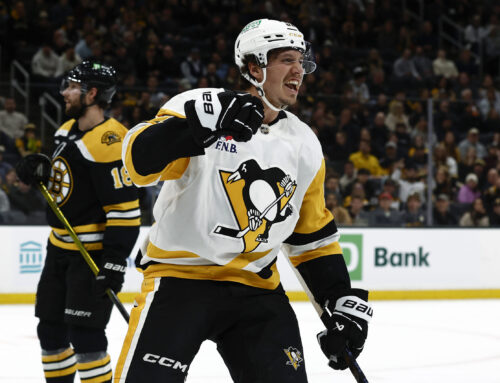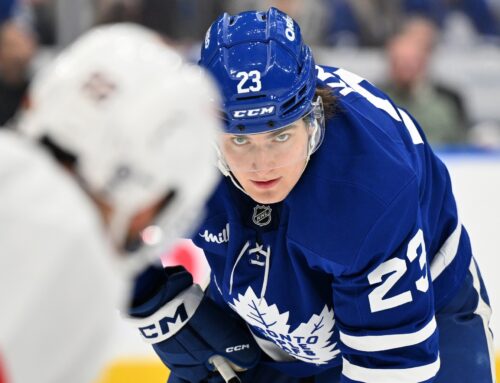
Hockey pools generally don’t count shooting percentages as a category, but it can go a long way to taking educated guesses on players who could bounce back from down years.
A player who all of a sudden sees his shooting percentage drop dramatically usually has fantasy general managers groaning about a poor season. The could be plenty of reasons for a decline in shooting percentage. A player starts off the season cold and gets frustrated. A player starts taking lower-quality shots or more shots from too far out. Maybe an elite linemate was traded or lost to injury. Or there could be an injury to the shooter takes away some of the power from his shot.
However, the dip could be an anomaly in an otherwise strong group of seasons. Remember, a drop of five per cent in shooting percentage equates to 10 fewer goals a year based on 200 shots. So, a 29-goal scorer becomes a 19-goal scorer and fantasy general managers are all of a sudden selling low.
10. Jason Spezza
Spezza isn’t on many radars when it comes to fantasy hockey these days. This year, he put up only 26 points while averaging 13 minutes a game doesn’t contribute in peripheral categories. Three years ago, Spezza scored 33 goals on 16.3 shooting percentage. Last year he had 15 goals on 10.1 per cent. This year, his goal total dropped to eight goals on 5.8 per cent, only the second time in his career he has been below double digits in shooting percentage. His shot rate has also massively declined, which doesn’t help. However, shooting his three-year percentage average of 11.7 per cent would have still netted him 16 goals this season and would have made him slightly more valuable.
9. Tyler Bozak
Bozak isn’t a volume shooter, so a decrease in shooting percentage isn’t as likely to hurt him as others. However, he chose the wrong year to have a dip as he will be a 32-year-old unrestricted free agent in two weeks. His 7.1 shooting percentage was extremely low for him, as he’s never had a season below 12.1 per cent and his career average before this season was 15.1 per cent. He led the league in 2013-14 with 21.1 per cent. It’d be hard to guess whether he bounces back without knowing what team he will be on next year and what his role will be.
8. Milan Lucic
Lucic averaged 14.3 per cent the previous four years. This year, that number dropped to 6.8 per cent, which led to only 10 goals. If he shot his four-year average, he would have had 21 goals, which would have been more acceptable. I like Lucic to bounce back to his normal numbers next season, wherever that may be.
Many aren’t noticing, but with Barkov’s healthy and breakout season (78 points in 79 games), he actually could have had a much better season if he had come close to his average shooting percentage. In the three years before this one, he averaged a 14.9 shooting percentage and was as high as 16.4 per cent in 2015-16. His shooting percentage dropped to 10.5 per cent this year. Still, fantasy general managers will take the lower shooting percentage and fewer goals if it means healthy and productive seasons.
Panarin has only been in the league for three seasons, but it should be noted that his shooting percentage has declined every year, although that has been offset by an increase in the number of shots he takes. So, his goal total has stayed roughly the same. Still, he went from 16 per cent to 14.7 per cent in his two seasons in Chicago to 11.8 per cent this year in Columbus. He’s an elite talent so you don’t need to worry about the decrease in shooting percentage unless he all of a sudden, his shot total rapidly declines.
5. Brandon Saad
No one could have projected Saad would have struggled to score goals despite taking a career-high 237 shots, especially when he started the season with six goals in six games on 26 shots. He wound up with 18 goals on 7.6 per cent shooting. He had a career 11.3 per cent shooting percentage with Chicago in his first go-around with the team, 12.4 per cent with Columbus and a career 11.8 per cent before this season.
4. Mike Hoffman
Hoffman will be an interesting case next year. His shooting percentage has declined every year for the past four seasons, but he averaged 12.3 per cent from 2014-15 to 2016-17. That dropped to 8.6 per cent this year. That’s 10 fewer goals than he would have scored if he shot the three-year average. With all his off-ice issues and guaranteed to be dealt this summer, who knows what might happen to him next season.
I make no secret on the forums about how Galchenyuk was misused in Montreal for six seasons, from playing with sub-optimal linemates to being benched whenever he made a mistake to not given a chance to grow into the centre position. However, he is a goal scorer, and he averaged a 14.3 shooting percentage in the three seasons before this one. This year, that dropped to 8.9 per cent. If he had shot his three-year average, he would have put up 30 goals.
2. Joe Pavelski
Some have talked about the slow decline of Joe Pavelski, but I believe it’s been overhyped. He played the first half of the season injured, but really turned it on in the second half and had plenty of chemistry with newly-signed Evander Kane. Once counted on for 30-plus goals a year, Pavelski struggled this year and finished with 22 goals. In 2010-11, Pavelski had a 7.1 shooting percentage, but in the next six seasons averaged 14.3 per cent, even reaching as high as 17 per cent and 18.2 per cent. This year he was at 9.8 per cent.
Tarasenko had a somewhat disappointing season, getting to 66 points after three straight years of 73, 74 and 75. In his previous three seasons before this one, Tarasenko averaged a 13.8 shooting percentage. This year, that dropped to 10.8 per cent while taking a career-high 306 shots. If Tank had shot just his average, he would have scored 42 goals instead of 33, and would have had a 75-point season. Then we’d be talking about how he is one of the most consistent players every single season.





 MTL
MTL CAR
CAR WPG
WPG ANA
ANA N.J
N.J DET
DET NSH
NSH DAL
DAL VAN
VAN VGK
VGK S.J
S.J EDM
EDM TOR
TOR CBJ
CBJ CHI
CHI L.A
L.A CGY
CGY MIN
MIN
